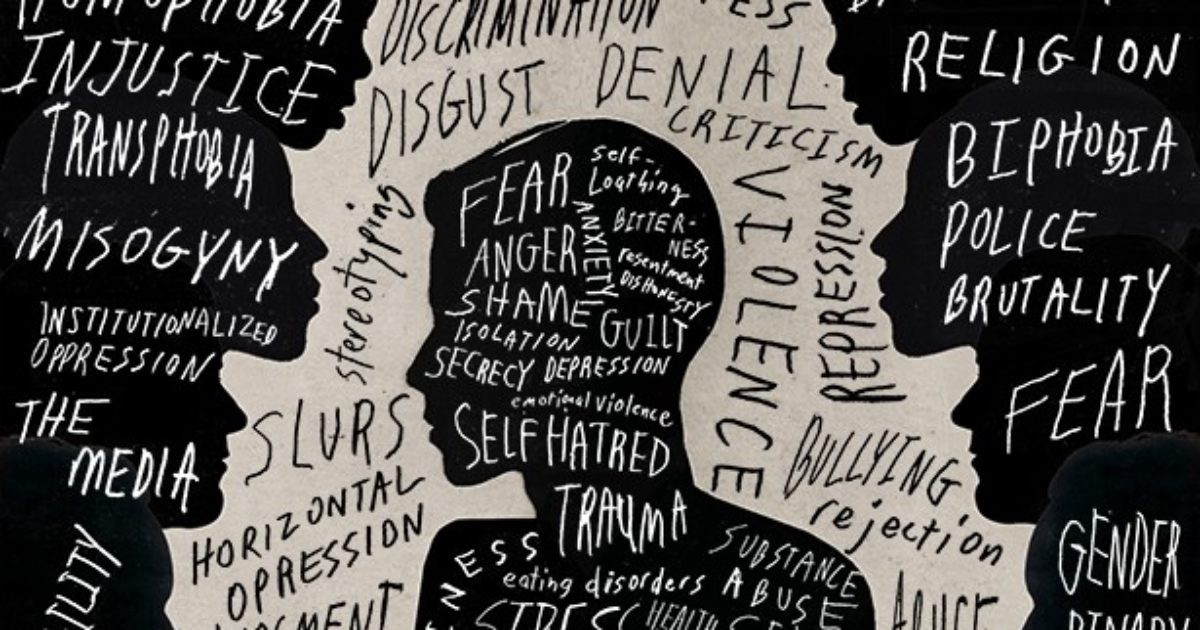A recent article, published in the Psychology of Sexual Orientation and Gender Diversity, examined the relationships between external minority stressors, internalized homophobia, LGBT community connectedness, and suicidal ideation. The researchers suggest that internalized homophobia is accounted for by greater external minority stressors and can lead to a higher rate of suicidal ideation. Their analysis also highlights the importance of LGBT community connectedness in mitigating the effects of these stressors.
“Most research to date has focused on factors exacerbating poor mental health outcomes and suicidality among sexual minority individuals, with relatively little attention paid to potential resiliency factors proposed by the minority stress model, especially resiliency factors related to one’s affiliation within the LGBT community,” the lead researcher, Megan Rogers from Florida State University, writes.

Studies based on the minority stress model show that both external minority stressors (e.g., hate crime victimization, discrimination, harassment) and internal minority processes (e.g., internalized homophobia, the expectation of rejection, concealment of sexual orientation) can lead to greater psychological distress, poorer mental health, higher risk for substance use, and risk for depression and suicidal ideation in sexual minority individuals.
“Internal minority stressors, particularly internalized homophobia, have been linked to the presence and severity of psychological distress and other internalizing mental health concerns, including depression, anxiety, and suicidal ideation,” the researchers note.
“We expected that we would replicate previous findings, in that external minority stressors would be positively associated with internalized homophobia and suicidal ideation, and that internalized homophobia would account for the relationship between external minority stressors and suicidal ideation.”
Coping, adaption, and resiliency are protective factors for sexual minority individuals to develop positive psychological outcomes and mental health. Social and environmental influences such as community engagement have been proposed to strengthen one’s resiliency and increase one’s psychological well-being as one may be less negatively impacted by external and internal minority stressors.
The researchers identified a need to understand better the role of LGBT community connectedness in the minority stress pathway to suicidal ideation. While some studies suggest that community engagement is associated with less internalized homophobia, which could lead to lower suicide risk, some believe that community engagement has no direct influence on suicidality.
“We hypothesized that LGBT community connectedness would serve a protective role, such that relationships between external minority stressors and internalized homophobia, and internalized homophobia and suicidal ideation, would be weaker among those with higher levels of LGBT community connectedness.”
The study collected and analyzed responses from 329 sexual minority adults. They were asked to provide their experiences on discrimination/harassment, internalized homophobia, community connectedness, and suicide ideation.
The study found that greater external minority stressors (discrimination/harassment) were significantly related to greater internalized homophobia. In turn, greater internalized homophobia was significantly related to more severe suicidal ideation. Internalized homophobia significantly accounted for the association between greater external minority stressors and more severe suicidal ideation.
“That is, greater minority stress appears to be associated with more severe suicidal ideation because it is associated with more severe internalized homophobia,” the researchers note. “Consistent with prior research, we found significant associations between external minority stressors, internalized homophobia, and suicidal ideation.”
“It is possible that internalized homophobia represents a specific form of self-hatred experienced by sexual minority individuals as a result of repeated experiences with sexual orientation-based harassment and discrimination.”
The study also found that greater external minority stressors and greater internalized homophobia were stronger at high levels of LGBT community connectedness than at low levels, as they hypothesized. Similarly, the relationship between greater internalized homophobia and more severe suicidal ideation was found stronger at higher levels of LGBT community connectedness compared to at lower levels.
“At first blush, results of our moderation analyses seem contrary to what might be expected. We had posited that LGBT community connectedness might serve as a buffer between minority stressors and suicidal ideation, as well as internalized homophobia and suicidal ideation. Instead, we observed the opposite,” the researchers write.
“One explanation for this pattern of findings is that sexual minority individuals who experience more adverse effects of discrimination, harassment, and internalized homophobia may be more likely to seek out the support of the LGBT community connectedness.”
The researchers encourage the clinicians who work with sexual minority individuals experiencing suicidal thoughts to attend to the internalized homophobia in the therapeutic process even if the causes of suicidal thoughts are external minority stressors.
“Sexual minority individuals navigating the coming out process may seek support from the greater LGBT community in an effort to address difficulties,” the researchers explain.
Also, advising individuals to seek out community support may not reduce internalized homophobia or suicide risk. There is a need for clinicians to develop sexual-minority-specific interventions and to test the efficacy of such interventions. The researchers also propose that clinical approaches to restructuring negative automatic thoughts about one’s own sexual identity, such as cognitive behavioral therapy, may help address internalized homophobia.
“Researchers have suggested that suicide risk factors among sexual minority individuals may be distinct from those that exist among nonsexual minority individuals; thus, consideration of factors such as internalized homophobia is critical,” the researchers conclude.
“These factors may inform why disparities in mental health exist between sexual minority and heterosexual individuals… Overall, our results signal the importance of clinician competence in providing mental health care services to sexual minority individuals.”
****
Rogers, M. L., Hom, M. A., Janakiraman, R., & Joiner, T. E. (2020). Examination of minority stress pathways to suicidal ideation among sexual minority adults: The moderating role of LGBT community connectedness. Psychology of Sexual Orientation and Gender Diversity. (Link)















As if we didn’t know.
From
Angry of Reading.
Report comment
Removed for moderation.
Report comment
Removed for moderation.
Report comment
Sorry but I’m going to have to disagree with the whole output.
To begin with, after Joshua Bell’s father got how much money to stick guys saying they WERE already homophobic full of not even pins and needles but “medical” supplies to monitor their reaction to what they didn’t like, as stated already, and would from the abuse called pornography (look it up, as if the bad guy wins, and how much he hurts his partner is salvation) have a stimulant reaction be founding having “internal stressors,”indicating that actually they were homosexual.
I would suggest that anyone that can read this whole article do a word search for “internal,” and see if they get stimulated, or just bored to death….
The whole thing is a blinking mess insulting nonsense.
Report comment